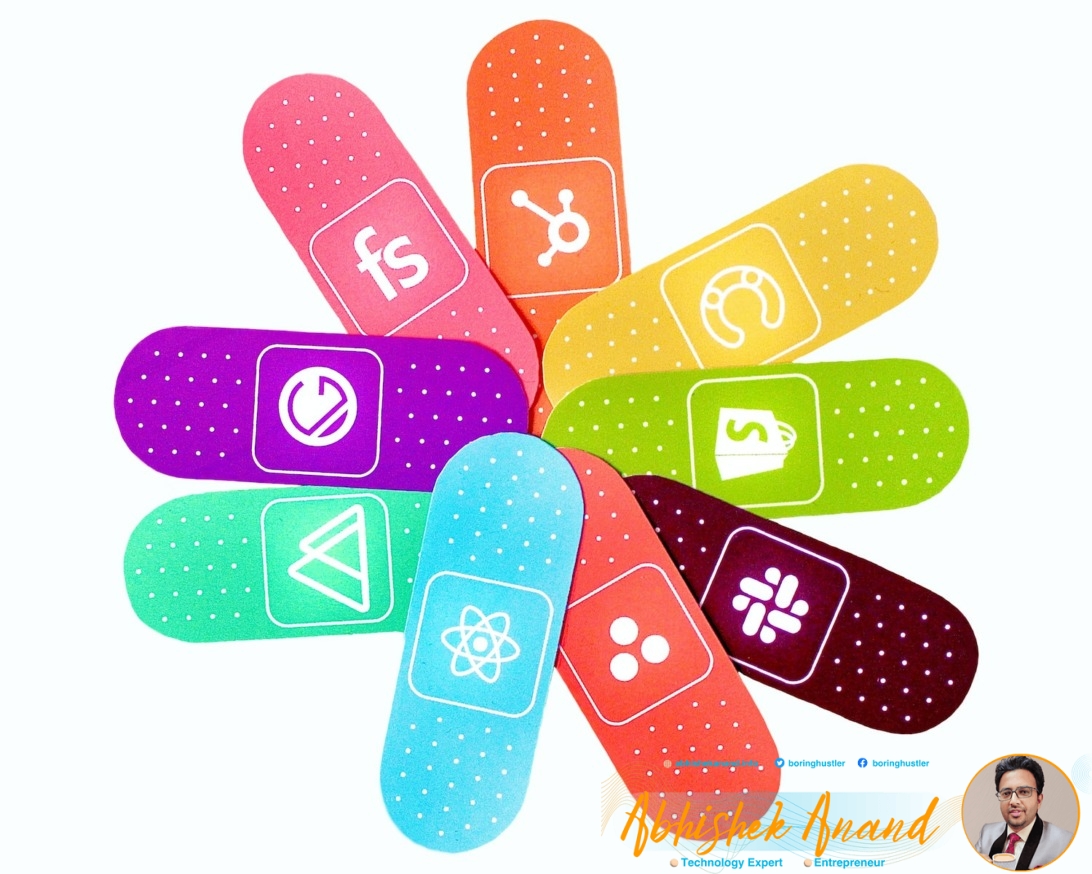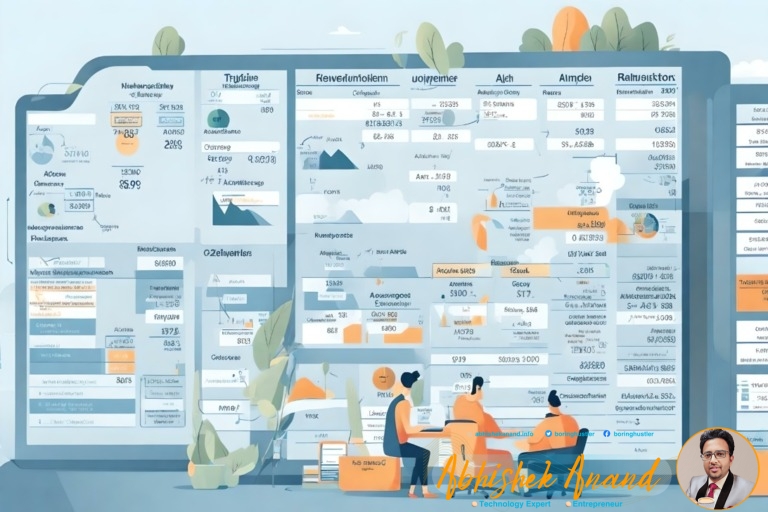Software as a Service (SaaS) has become an increasingly popular business model in recent years, offering businesses and consumers the convenience of accessing software applications over the internet rather than installing and maintaining them on their own devices. However, with this shift towards cloud-based services comes new challenges for accounting professionals tasked with recognizing revenue from SaaS contracts.
This article will provide an overview of SaaS revenue recognition principles and methods, as well as the challenges that arise in accurately recording revenue for these types of contracts. We will also explore best practices for SaaS revenue recognition to help ensure compliance with regulatory requirements and avoid common mistakes that can lead to financial misstatements. By understanding these key concepts and considerations, accounting professionals can better navigate the complex world of SaaS revenue recognition and provide accurate financial reporting for their organizations.
Overview of Software as a Service (SaaS) Revenue Recognition
A comprehensive understanding of the principles and challenges associated with Software as a Service (SaaS) revenue recognition is essential for businesses operating in this sector. With the rapid growth of the SaaS market, subscription models have become increasingly popular due to their flexibility and affordability. However, these models pose unique challenges when it comes to recognizing revenue.
Unlike traditional software sales where revenue is recognized upfront, SaaS revenue recognition is spread out over time as customers pay for their subscriptions. This leads to complex accounting rules that require businesses to carefully track and report their revenue streams. Additionally, SaaS companies must account for factors such as customer churn rates and changes in subscription plans which can impact future revenue.
The importance of accurate revenue recognition cannot be overstated. It allows businesses to make informed decisions about investments, pricing strategies, and resource allocation. Moreover, inaccurate reporting can lead to regulatory violations and damage a company’s reputation among investors and customers alike. Thus, it is imperative that companies in the SaaS industry develop robust policies and procedures for managing their revenue recognition processes.

The Importance of Accurate Revenue Recognition
Precise and consistent revenue recognition is a critical element in ensuring the financial integrity of an organization. Revenue recognition refers to the process of accounting for the money that a company earns from its products or services. The importance of accurate revenue recognition cannot be overstated as it impacts various aspects of a business, including forecasting future cash flows, calculating taxes, and assessing profitability.
The consequences of inaccurate revenue recognition can be severe and long-lasting. If a company misrepresents its earnings by incorrectly recognizing revenue, it may face regulatory penalties or shareholder lawsuits. Moreover, inaccurate reporting can damage the credibility and reputation of a company in the eyes of investors, creditors, and other stakeholders. Therefore, companies must adhere to strict accounting principles when recognizing SaaS revenues to avoid any legal or financial repercussions.
Accurate revenue recognition is crucial for maintaining financial transparency and accountability within an organization. Companies need to ensure that they comply with recognized principles when reporting their earnings from SaaS products or services. In the next section, we will discuss these principles in detail to provide further insight into how SaaS revenue should be recognized.
The Principles of SaaS Revenue Recognition
To ensure accurate financial reporting, it is imperative for companies to follow established guidelines when recognizing revenues from SaaS products or services. Revenue recognition standards and GAAP guidelines play a crucial role in helping businesses determine the appropriate timing and amount of revenue to be recognized. Failure to comply with these principles can result in legal and reputational consequences that may negatively impact the company’s financial health.
The following are some essential principles of revenue recognition for SaaS products:
Identify the performance obligation
Determine transaction price
Allocate transaction price to performance obligations
Recognize revenue when performance obligation is satisfied
Consider contract modifications
By adhering to these principles, businesses can accurately report revenues from their SaaS products or services while maintaining transparency with their stakeholders. However, recognizing revenues from SaaS products can be complex due to factors such as subscription-based pricing models and multi-year contracts.
In the next section, we will explore various revenue recognition methods for SaaS that companies can use based on their business needs and customer requirements. These methods include recognized over time (ratable), upfront (single point in time), usage-based (as consumed), among others. Each method has its benefits and drawbacks that must be considered when determining which one best suits the company’s needs.

Revenue Recognition Methods for SaaS
This section will discuss the various revenue recognition methods for SaaS, including the Straight Line Method, Usage-Based Method, and Milestone-Based Method. The Straight Line Method recognizes revenue evenly over a period of time, while the Usage-Based Method recognizes revenue based on actual usage by customers. The Milestone-Based Method recognizes revenue when specific milestones are achieved in the customer’s use of the software. Each method has its own advantages and challenges that must be considered when choosing which method to use for SaaS revenue recognition.
Straight Line Method
The Straight Line Method is a commonly used revenue recognition method in the SaaS industry that evenly allocates revenue over the period of a contract. This method involves dividing the total contract value by the number of periods in the contract, resulting in an equal amount of revenue recognized each period. While this method is straightforward and easy to understand, it may not accurately reflect usage patterns or changes in pricing throughout the course of a contract. Additionally, calculation accuracy and revenue forecasting can be challenging with this method if there are changes to the duration or terms of a contract.
As an alternative to the Straight Line Method, some SaaS companies use usage-based methods for revenue recognition. These methods track how much customers use their software and recognize revenue based on actual usage rather than evenly spaced time periods. This approach can provide more accurate revenue recognition and aligns with customers’ actual consumption patterns. However, usage-based methods may require more complex tracking systems and data management processes compared to straight line methods.
Usage-Based Method
Implementing a usage-based method for revenue recognition in the SaaS industry can provide more accurate insights into customers’ consumption patterns and increase transparency, ultimately leading to greater customer satisfaction and loyalty. This method involves recognizing revenue based on the amount of service used by customers, which is measured using metrics such as the number of users or storage space utilized. One benefit of this approach is that it aligns revenue recognition with actual service delivery, providing a more accurate representation of the value delivered to customers. Additionally, it allows for greater flexibility in pricing strategies since pricing can be adjusted based on usage levels.
However, there are also limitations to using a usage-based method for revenue recognition in the SaaS industry. One challenge is determining how to allocate costs related to delivering services since they may not be directly proportional to usage levels. Additionally, this method may result in less predictable revenue streams since revenues will vary depending on customer usage trends. Despite these challenges, many companies have found success with implementing a usage-based approach for revenue recognition due to its ability to provide granular insights into customer behavior and improve overall transparency.
Moving forward, understanding different methods for revenue recognition in the SaaS industry is crucial as it impacts financial reporting and decision making processes. Therefore, the subsequent section will discuss another common approach known as milestone-based method.
Milestone-Based Method
The milestone-based method for revenue recognition in the SaaS industry involves recognizing revenue based on achieving specific project milestones. This method is commonly used when there are contractual obligations that require a certain amount of work to be completed before payment can be received. Revenue forecasting is an important aspect of this method as it requires accurately predicting when the milestone will be achieved and how much revenue will be recognized.
To use the milestone-based method, companies must establish clear and measurable milestones in their contracts with customers. These milestones should be significant and substantive, indicating that a significant portion of the work has been completed. Once these milestones are reached, revenue can be recognized accordingly. However, this method also poses challenges such as accurately measuring progress towards achieving milestones and ensuring that they are objectively verifiable. Additionally, if there are delays or changes in the scope of work, it may impact revenue recognition which highlights some challenges in saas revenue recognition.
Challenges in SaaS Revenue Recognition
SaaS revenue recognition presents several challenges that make it difficult to accurately account for revenue. These challenges include variable consideration, contract modifications, multiple performance obligations, and customer churn. Variable consideration refers to changes in the price of a product or service due to factors such as volume discounts or rebates. Contract modifications relate to changes made to a contract after it has been signed, which can impact revenue recognition. Multiple performance obligations arise when a single contract includes several products or services with varying delivery timelines. Finally, customer churn is an ongoing concern for SaaS companies that must carefully track customer retention rates and adjust their revenue recognition accordingly.
Variable Consideration
Variable consideration in revenue recognition requires careful consideration of the conditions that must be met for revenue to be recognized and raises the question of how to determine a fair estimate of variable payments. This is because variable consideration can take different forms such as discounts, rebates, refunds, bonuses or penalties which are conditional upon future events. Estimating uncertainty around variable consideration requires developing a pricing strategy that considers all possible outcomes, risks and uncertainties. For example, if a SaaS company offers a discount to customers who purchase their services for multiple years in advance but provides an option for them to cancel anytime with no penalty, then estimating the impact of this discount on future revenue would require considering various scenarios based on customer churn rates.
The challenge with variable consideration is determining whether it is probable that any future adjustments will result in significant reversals of previously recognized revenue. If it is not probable that there will be such reversals and there is sufficient evidence indicating what amount of variable payment will be received, then the SaaS company can recognize the expected value of the payment as revenue. However, if there is uncertainty surrounding the outcome or likelihood of receiving any payment at all, then recognizing any portion as revenue may not meet accounting standards. In order to manage these complexities around recognizing variable consideration in their financial statements accurately and compliantly with accounting regulations, SaaS companies need robust systems and processes that can handle estimates and changes in estimates over time due to factors such as contract modifications or cancellations without impacting their financial reporting accuracy.
As we move forward into examining the next subtopic about contract modifications, it becomes apparent how important it is for SaaS companies to have effective systems for handling variability in payments from customers while complying with accounting principles.
Contract Modifications
Contract modifications in the context of revenue recognition require careful consideration as they can impact performance obligations and timing of revenue recognition. Any changes to the terms and conditions of a contract must be evaluated to determine if it constitutes a new contract or a modification of an existing one. In some cases, additional goods or services may need to be delivered, while in others, previously agreed-upon obligations may no longer be required.
Here are some key factors that should be considered when evaluating contract modifications:
The nature and scope of any changes made to the original agreement
Whether the modification is accounted for prospectively or retrospectively
The effect on pricing and payment terms
Whether there are any contractual disputes arising from COVID 19
As businesses navigate through these uncertainties caused by COVID 19, contractual disputes have become more common. It is essential that entities consider all aspects of their contracts when making these modifications for revenue recognition purposes. With this in mind, understanding how to identify and account for contract modifications is critical for ensuring accurate financial reporting.
Moving forward, multiple performance obligations should also be carefully examined in relation to revenue recognition.
Multiple Performance Obligations
When evaluating revenue recognition, it is crucial to carefully examine contracts for multiple performance obligations. These are situations where a single contract involves the delivery of goods or services that can be separated into distinct components. Determining how to allocate the total transaction price among these different components is one of the key challenges in recognizing revenue under ASC 606. A company must identify each performance obligation and determine its stand-alone selling price to allocate revenue appropriately.
Performance obligation challenges arise when there are multiple deliverables within a contract, which have varying degrees of complexity or importance. For example, if a software company sells a package of products that includes maintenance and support services, the company may need to assess whether those services constitute separate performance obligations or should be bundled together with the products. Revenue allocation strategies require careful analysis to ensure that fair value is assigned to each component based on its relative value contribution. This process can become even more complex when contracts contain variable consideration such as rebates, discounts or incentives. Understanding these complexities and developing appropriate accounting policies will help companies navigate this aspect of revenue recognition with greater confidence and transparency.
It is important for companies to understand how they recognize revenue from multiple performance obligations in order to properly account for customer churn in their financial statements. In many instances, customer churn can result from dissatisfaction with one specific product or service offered by a company rather than an overall negative perception of the business as a whole. By understanding how they allocate revenue across various performance obligations within their contracts, companies can better identify which products or services may be causing customer churn and take proactive steps towards improving them before losing more customers.
Customer Churn
Customer churn is a significant concern for companies as it can indicate dissatisfaction with specific products or services offered. Customer retention is vital to ensure that businesses remain profitable and sustainable in the long run. Churn analysis is essential to identify why customers are leaving and how to prevent this from happening in the future. Below are three ways that companies can reduce customer churn:
Improve product quality: Customers may leave if they feel that the product or service does not meet their expectations. Improving the quality of products or services can help increase customer satisfaction, loyalty, and retention.
Enhance customer support: Poor customer support can lead to frustration and dissatisfaction among customers, leading them to leave. Providing timely and effective support can make customers feel valued, leading them to stay with the company.
Offer incentives: Offering incentives such as discounts or rewards programs can encourage customers to stay with a company for longer periods.
Understanding these factors that contribute to customer churn helps companies develop strategies and tactics aimed at reducing its impact on revenue recognition.
Effective management of performance obligations within contracts requires an understanding of how each obligation affects revenue recognition over time. The role of customer contracts in SaaS revenue recognition cannot be overstated as it provides clarity on pricing models, payment terms, renewal options, among other critical elements necessary for accurate revenue forecasting and reporting.

The Role of Customer Contracts
One crucial aspect of Saas revenue recognition is understanding the legal and accounting implications of agreements between a provider and its clients. Customer retention plays a critical role in this process as it affects the duration and value of contracts. Therefore, providers must negotiate contracts that align with their business objectives while ensuring compliance with accounting standards.
In addition to contract negotiation, providers must also track accurate data to ensure proper revenue recognition. This includes monitoring usage metrics, renewal rates, and payment schedules. Providers must also consider how changes in customer behavior or market conditions may impact revenue recognition over time.
Overall, the role of customer contracts highlights the importance of strategic planning and attention to detail for Saas providers. By negotiating favorable terms while complying with accounting standards and accurately tracking data, providers can maintain financial stability while meeting the needs of their clients. The next section will explore the importance of accurate data tracking in more detail.
The Importance of Accurate Data Tracking
Accurate data tracking is crucial for Saas providers to effectively monitor usage metrics, renewal rates, and payment schedules. Data accuracy is essential for proper revenue recognition in accordance with accounting principles. Therefore, implementing reliable tracking systems is a vital aspect of financial management in the SaaS industry.
Inaccurate or incomplete data can result in errors in revenue recognition, leading to incorrect financial statements and potential legal consequences. It can also lead to poor decision-making by executives who rely on this information to make strategic business decisions. With accurate data tracking, SaaS providers can ensure they have a clear understanding of their revenue streams and make informed decisions that benefit both the company and its customers.
However, achieving accurate data tracking can be challenging due to various factors such as complex pricing models, evolving customer needs, and technological limitations. To overcome these challenges, SaaS providers must continuously evaluate their tracking systems’ effectiveness and adapt them accordingly to meet changing demands. The role of automation in revenue recognition will be discussed further in the subsequent section as one solution for handling these challenges.
The Role of Automation in Revenue Recognition
Accurate data tracking is a crucial aspect of revenue recognition for SaaS companies. However, relying on manual methods to track this data can be time-consuming and prone to errors. This is where automation comes in. The implementation of automated revenue recognition systems can greatly benefit SaaS companies by streamlining the process and reducing the risk of errors.
Automation benefits SaaS companies in several ways. Firstly, it can significantly reduce the time and effort required for revenue recognition, freeing up resources to focus on other aspects of the business. Secondly, automated systems are more accurate than manual methods since they eliminate human error. This leads to increased trust in financial statements among stakeholders such as investors and regulators.
Despite its benefits, implementing an automated revenue recognition system can also pose challenges for SaaS companies. One major challenge is choosing the right software that meets their specific needs while also complying with accounting principles such as ASC 606 and IFRS 15. Another challenge is ensuring that employees are properly trained on how to use the new system effectively.
Automation plays a vital role in simplifying revenue recognition for SaaS companies while also improving accuracy and reliability of financial statements. Although there may be implementation challenges involved in adopting these systems, they ultimately lead to greater efficiency and transparency within a company’s financial operations. Next, we will explore how revenue recognition impacts financial statements in more detail.
The Impact of Revenue Recognition on Financial Statements
Implementing an automated revenue recognition system can have a significant impact on the financial statements of SaaS companies. One of the most important benefits of such systems is that they ensure consistency and reliability in recognizing revenue. In addition to this, automation reduces the risk of errors in accounting processes, which could lead to inaccurate financial reporting.
Revenue recognition standards are crucial for ensuring sound financial management practices and accurate reporting. By automating the process, SaaS companies can ensure compliance with these standards while reducing risks associated with human error. Furthermore, automated systems provide comprehensive reports that help stakeholders understand how revenue is recognized and accounted for in financial statements.
Implementing an automated revenue recognition system can significantly impact a SaaS company’s financial statements by ensuring accuracy and consistency in the accounting process. It also helps ensure compliance with revenue recognition standards while minimizing errors and providing comprehensive reports. The next section will discuss the role of auditors in saas revenue recognition.
The Role of Auditors in SaaS Revenue Recognition
Auditors play a significant role in ensuring the reliability and transparency of revenue recognition practices in SaaS companies. As they are responsible for reviewing financial statements and internal controls, auditors hold significant accountability in detecting any fraudulent or unethical activities related to revenue recognition. In the context of SaaS companies, where revenue recognition is often complex due to the recurring nature of subscription-based services, auditors must remain vigilant to ensure that the company’s accounting practices align with Generally Accepted Accounting Principles (GAAP).
However, auditors face several challenges when auditing SaaS companies’ revenue recognition practices. First, determining the appropriate timing of recognizing revenue can be difficult since subscriptions may involve multiple periods and varying payment schedules. Second, assessing whether a contract meets GAAP criteria for revenue recognition can also be challenging since contracts may contain complex clauses regarding pricing structures and cancellation policies. Third, some SaaS companies engage in aggressive accounting practices to inflate their financial performance metrics artificially.
To address these challenges and ensure ethical considerations are met during audits, auditors should prioritize maintaining independence from their clients by avoiding conflicts of interest. Additionally, auditors should maintain an open line of communication with management throughout the audit process while being prepared to challenge them on any questionable accounting practices. Lastly, auditors must remain up-to-date on industry trends and regulatory changes that may impact how they approach auditing SaaS companies’ revenue recognition.
Despite facing numerous challenges when auditing SaaS companies’ revenue recognition practices, auditors play a vital role in ensuring transparency and reliability within this industry. By prioritizing independence, effective communication with management and staying up-to-date with industry trends and regulations; auditors can help promote ethical business practices within SaaS organizations ultimately contributing toward more efficient operations across all sectors. Next we will discuss best practices for saas revenue recognition without writing ‘step’.
Best Practices for SaaS Revenue Recognition
Effective management of revenue recognition is crucial for SaaS companies as it directly impacts financial reporting and investor confidence. Revenue recognition in SaaS involves recognizing revenue over the life of a contract, which can span multiple years. This requires effective contract management to ensure that revenue is recognized accurately and in compliance with accounting standards.
One best practice for SaaS revenue recognition is software integration. Integrating the company’s billing system with its accounting software can help automate the process of recognizing revenue. This reduces errors and ensures that revenue is recognized consistently across all contracts. Additionally, having a centralized system for managing contracts can help ensure that all necessary information is captured and accounted for.
Another best practice for SaaS revenue recognition is to establish clear policies and procedures. These should outline how contracts are reviewed, approved, and recorded in the company’s financial statements. Having well-defined policies can help ensure consistency in how revenue is recognized across different contracts and reduce the risk of errors or misstatements.
Effective management of revenue recognition is critical for SaaS companies to maintain investor confidence and comply with accounting standards. Best practices such as software integration and clear policies can help ensure accurate and consistent recognition of revenue over the life of a contract. However, there are still common mistakes that companies must avoid when implementing these practices to achieve optimal results without compromising their financial reporting integrity.
Common Mistakes to Avoid in SaaS Revenue Recognition
Mistakes in revenue recognition can severely impact the financial reporting and investor confidence of a SaaS company, making it crucial to avoid common errors. The most common mistake is recognizing revenue too early before services or products are delivered. This error can inflate revenue and misrepresent the true financial standing of the company. Another common mistake is not properly accounting for discounts or credits given to customers, which can lead to overstatement of revenue.
To avoid these errors, SaaS companies must implement compliance measures such as having clear policies and procedures for revenue recognition and ensuring that all employees understand them. They should also use software systems that automate the process of recognizing revenue based on pre-determined criteria. Additionally, companies must ensure that they have appropriate documentation to support their recognized revenues.
Avoiding errors in SaaS revenue recognition is critical for maintaining accurate financial statements and investor trust. Compliance measures such as clear policies and procedures, automated software systems, and appropriate documentation are essential to prevent mistakes in this area. In the next section, we will discuss regulatory and legal considerations related to SaaS revenue recognition.
Regulatory and Legal Considerations
Regulatory and legal considerations play a crucial role in ensuring the accuracy and transparency of SaaS companies’ revenue recognition practices. The recent SEC investigation into Cloud Peak Energy’s accounting practices highlights the need for companies to comply with regulatory requirements. Compliance challenges such as ASC 606, IFRS 15, and local regulations can pose significant hurdles for SaaS companies.
International regulations also add an additional layer of complexity to SaaS revenue recognition practices. Companies must navigate varying rules across different countries, which can lead to inconsistent reporting practices. Additionally, currency exchange rates can impact revenue recognition calculations, further complicating the process.
Regulatory and legal considerations are critical factors that impact SaaS companies’ revenue recognition practices. Compliance challenges and international regulations require careful attention to ensure accurate reporting. In the next section, we will examine case studies that illustrate these principles in action.

Case Studies in SaaS Revenue Recognition
Having discussed regulatory and legal considerations in SaaS revenue recognition, it is important to delve into practical applications through case studies. Case studies can provide valuable insights into the complexities of SaaS revenue recognition and offer implementation strategies for businesses.
One such case study is that of Salesforce, a leading SaaS company. Salesforce adopted the ASC 606 standards early on and faced challenges with transitioning their accounting systems and revenue recognition processes. Through careful planning and collaboration between finance, legal, and IT departments, they were able to successfully implement the new standards while minimizing disruption to their business operations.
Another example is that of Zuora, a company specializing in subscription billing software for SaaS businesses. As expected, their revenue was largely based on recurring subscriptions which made applying traditional revenue recognition methods difficult. By adopting the ASC 606 standards early on and collaborating with auditors to ensure compliance, Zuora was able to streamline its processes and maintain transparency in its financial reporting.
These case studies emphasize the importance of understanding accounting principles when it comes to SaaS revenue recognition. Implementation strategies should be developed collaboratively across departments including finance, IT, legal, marketing etc., in order to ensure compliance with regulations while also optimizing business operations.
Conclusion
In conclusion, understanding SaaS revenue recognition is critical to accurately reporting financial information for SaaS companies. The principles of revenue recognition are complex and require in-depth knowledge of accounting standards. Revenue recognition methods must be carefully chosen based on the specific characteristics of each SaaS contract.
Despite the challenges encountered in SaaS revenue recognition, there are best practices that can help mitigate potential errors and ensure compliance with regulatory guidelines. Companies must also be aware of legal considerations related to revenue recognition and stay up-to-date with changes in accounting standards.
One interesting statistic is that according to a 2019 survey by PwC, 72% of CFOs reported increased scrutiny from investors on their company’s revenue recognition practices. This highlights the importance of accurate and transparent reporting for maintaining investor trust and confidence in a company’s financial performance. As such, it is crucial for SaaS companies to prioritize proper revenue recognition practices to maintain long-term success.

